What comes first: the product or the market?
This is the question startup founders face when deciding to break ground on a new business venture. Some leaders are driven by the desire to reinvent a certain market, while others are simply motivated by an innovative product idea. Nevertheless, finding the perfect match between a product and a market is not always easy to achieve — but when it happens, it sets the foundation for success.
In order to find the perfect product-market fit, leaders must take into account the needs of the consumer, making the process a sometimes long — albeit enlightening — one. By assessing customer feedback and identifying pain points, creators can bring their ultimate product ideas to fruition.
Of course, that doesn’t mean the product will always be the exact same. Whether it’s real estate or healthcare, industries change over time, and for this reason, products must meet the market’s evolving needs.
Built In caught up with 13 tech leaders to learn how they found their product-market fit and how they’ve adapted to evolving market needs.
What is Product-Market Fit
Zumper
Nico Rattazzi
HEAD OF PRODUCT
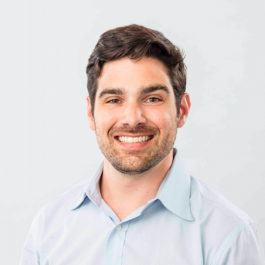
Zumper aims to transform the rental industry by making renting an apartment “as easy as booking a hotel.” Apartment-seekers can use their platform to search for verified properties, reserve them on the spot and lease them online.
Head of Product Nico Rattazzi talked about why Zumper’s founders decided to reinvent the rental market, the importance of understanding customers and how their product changed over time.
Which came first for you: the product or the market?
For us, the market came first. We knew the apartment rental market is a massive, multi-billion dollar market, but to us, the product experience was poor. Our founders started the company because of the stressful and antiquated experience of finding a house or apartment for rent. For us, that meant working with as much of the market as possible in order to invest in the experience of making apartment rentals as easy as booking a hotel. This meant understanding renters and landlords and focusing on providing an experience that leverages incredible technologies.
By having a two-sided marketplace at scale, we’ve finally arrived at our current product experience focus known as “Instarent.” This is our first attempt at scale to provide a high-quality digital leasing experience. This involves ensuring quick and direct correspondence via our marketplace and providing leasing through a streamlined flow of screening and applications as well as lease signing. The landlord gets a qualified renter with additional financial insurance to ensure they’re covered for twelve months. By understanding the pain points of the market and growing the tools for landlords and renters, we are able to deliver a product that provides a different level of service compared to the classic rental marketplace.
Product-market fit is all about understanding the customer and addressing their needs.”
Tell us about your process for fine-tuning product-market fit. What's one aspect of that process you find is particularly important?
Product-market fit is all about understanding the customer and addressing their needs. Getting a deeper understanding of our customers has allowed us to build products for the fragmented market experience that defines renting. For us, it’s critical to understand the needs of our customers while we are undergoing our product process for all of our roadmap items. This involves understanding how customers are currently addressing a problem through research, including conversations, surveys and product data.
Once we have identified the problem and begin developing our solution, we check in with our customers again to validate our solution and ensure we’ve developed something that works for them. This can be as simple as running our customers through the interface over video or having them interact with a prototype. The feedback we get from our customers is invaluable at this stage, as it ensures we’re on the right track and reduces the risk of launching the wrong solution. This process, and specifically research around the problem space and validation of the solution, has allowed us to step into our customers’ shoes.
How did your original vision for the product evolve or change to better address the needs of the market?
When we started, we wanted to drive connections in our marketplace by bringing renters and properties together. This meant developing product features and growth strategies to find renters and properties to bring together. Now that we’ve become the largest independent rental marketplace in our space, we’re shifting our product focus to deliver on the needs of the market and, ultimately, our original vision. By working directly with both sides of the marketplace, we’re able to not only provide the best matches based on preference but provide that with an incredible end-to-end digital experience.
Opendoor
Ian Wong
CO-FOUNDER AND CHIEF TECHNOLOGY OFFICER

Opendoor is on a mission to “empower everyone with the freedom to move.” Currently operating across 21 U.S. markets, the company enables people to buy, list, sell, tour or trade-in homes online.
Co-founder and Chief Technology Officer Ian Wong spoke about Opendoor’s aim to fix the “fragmented” real estate industry and how they reshaped their product to meet the needs of the market.
Which came first for you: the product or the market?
The market came first. Buying and selling a home represents one of the largest financial transactions in people’s lives, yet it’s often a very stressful experience. The real estate ecosystem is fragmented. It’s fraught with misaligned incentives, and customers historically report low net promoter scores. At Opendoor, we believe a vertically integrated solution that delivers a simple and seamless transaction experience will deliver outsized value to customers.
We have a core hypothesis that customers crave certainty, convenience and speed.”
Tell us about your process for fine-tuning product-market fit. What's one aspect of that process you find is particularly important?
We have a core hypothesis that customers crave certainty, convenience and speed. In the early days at Opendoor, our goal was to “wow” our customers with solely the description of the product: “Sell your home within a few clicks of a button.” And we were looking for strong reactions, not lukewarm ones. This signaled that the product direction was worth pursuing.
How did your original vision for the product evolve or change to better address the needs of the market?
Our vision for the company has always been, and still is today, to empower everyone with the freedom to move. As our first product gained traction, we were able to address additional, unmet needs and wants that many homeowners and home shoppers have. This led us to expanding our suite of products and developing the services we offer today. We provide a one-stop shop for consumers to list, sell, tour, buy, trade-in and finance homes for an integrated and frictionless experience from start to close and everything in between.
Fivetran
Fraser Harris
VICE PRESIDENT OF PRODUCT
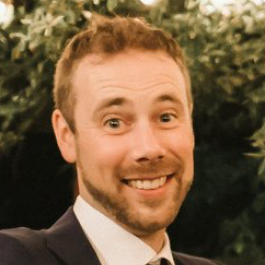
Fivetran wants to make it easier for companies to access their data from different sources. The company enables businesses to make data-backed decisions by utilizing fully automated connectors that sync data from applications, databases, logs and more into a cloud warehouse.
Vice President of Product Fraser Harris discussed Fivetran’s product-market fit journey, the importance of focus and his thoughts on the data market.
Which came first for you: the product or the market?
Like many great startup stories, Fivetran’s product-market fit came in 2015 when our earliest customer told us to drop what we were doing and focus on the one thing they were willing to pay us for. A couple of months later, we had ten customers. A year later, we had 100. Five years later, we have 1,500.
Figure out what your customers really value, and then relentlessly focus on improving along that singular dimension.”
Tell us about your process for fine-tuning product-market fit. What's one aspect of that process you find is particularly important?
Focus. Figure out what your customers really value, and then relentlessly focus on improving along that singular dimension. As a result, we dominate in the top two buying criteria for our product and leave the rest of the market to fight over the other less valuable buying criteria as a differentiator, which includes price.
How did your target market shift as your product vision became more clear?
For a number of years, we didn’t believe the market was big enough, and we thought we would have to expand into other adjacent products. And yet, with every year of focus on our one great problem, we realized the total addressable market was ten times larger than we thought.
Luxury Presence
Malte Kramer
CEO AND FOUNDER
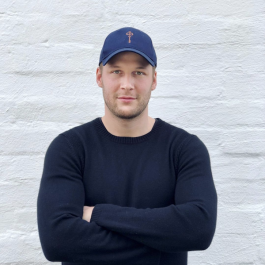
Which came first for you: the product or the market?
The product and market opportunities came almost simultaneously. I was consulting for Jade Mills, one of the biggest real estate agents in the world. Jade and I worked together to build a stunning website and set up her digital marketing channels. We created an SEO strategy that ranked her for over 300 keywords in her market, leading to a $40 million property sale. Her peers took notice and wanted to understand how they could leverage digital to drive forward their businesses as well. That was the point I realized there wasn’t a product that effectively served luxury real estate agents looking to grow their digital presence. That’s how Luxury Presence started, by working with some of the top agents in the world. Today we work with 22 of the top 100 agents in the U.S.
We look at product-market fit as being customer centric.”
Tell us about your process for fine-tuning product-market fit. What's one aspect of that process you find is particularly important?
We look at product-market fit as being customer centric. From the inception of the business, I've stayed close to customers. I have conversations with agents and brokers every week to understand the challenges they are facing. The world is as dynamic as ever, and the real estate and technology industries are working together to facilitate innovation. It's important for me as the CEO to understand challenges and work with our team to provide the best products and services to enable agents to thrive online. We’re a customer-focused business and we interact with our clients daily. Customer feedback is being gathered in conversations, solicited through surveys, converted into data and used to direct our product and service innovation. We want to be the innovation that sets the standard for the industry.
How did your target market shift as your product vision became more clear?
Our target market became more clear when we signed our first brokerage partnership with a national brokerage with 20,000 agents to be its preferred website provider. It was verification that brokerages and agents are looking for technology and services to facilitate digital innovation within their own business. The impact of COVID-19 has only further proved product vision, as agents are in need of ways to win clients and sell homes without a handshake and an open house.
Cie
Anderee Berengian
CEO AND FOUNDER
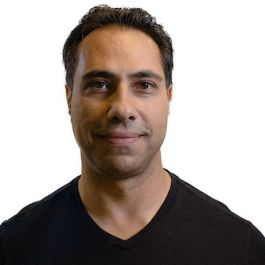
Which came first for you: the product or the market?
Market alignment is the most important component leading to a successful company. With the startups that we co-found, Cie matches technology or ideas with the right industry knowledge, executional team and partnerships that enable acceleration from idea to market without many of the common startup pivots and costly missteps.
With Performa, we were approached with technology proven to improve cognitive performance in athletes and set strategic direction for adaptation to the law enforcement market. Through close work with various subject matter experts, government agencies and the Pasadena Police Department, we went from concept to market within months and refined a path that will train peace officers to make high-speed, instinctual decisions and provide innovation to a much-needed market.
Tell us about your process for fine-tuning product-market fit. What's one aspect of that process you find is particularly important?
Pairing deep market knowledge with the right partnerships brings the ability to act strategically throughout the entire startup process, rather than just hoping the market will follow. With Performa, we started with technology that had proven results among professional athletes and ripe potential for peace officer training, but the insight into the real issues and needs of law enforcement are what put us on course. Traditionally, training has been focused on physical skills and abilities, but this technology adds important work toward environmental recognition and de-escalation with gamification and portability for a highly adoptable interface.
The flexibility of the technology to adapt, and recognizing where and how that’s needed, is one of the key strengths of Cie’s approach to launching startups.”
How did your original vision for the product evolve or change to better address the needs of the market?
Cie launched Performa just over a year ago, and the company raised venture funding in March. While we were always focused on peace officer training and decision-making around the use of force, the need for de-escalation training has been highlighted by current events. The flexibility of the technology to adapt, and recognizing where and how that’s needed, is one of the key strengths of Cie’s approach to launching startups.
InvestCloud, Inc.
Brett Heinz
HEAD OF PRODUCT, BLUE
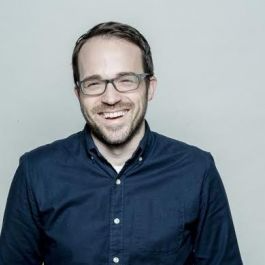
Which came first for you: the product or the market?
Most financial services companies rely on old technology that is not integrated and poorly designed, if designed at all. We built InvestCloud’s Blue product to fill this gap in the market by providing investment managers with the future of client communication, reporting, automation and management. Blue works at speed, delivering intuitive and high-touch client relationships through smart applications on a cloud-based digital platform.
Tell us about your process for fine-tuning product-market fit. What's one aspect of that process you find is particularly important?
While we continue to refine our market fit, InvestCloud focuses on two key elements: design first and building a “working unwired solution.” Eliminating programming is core to the InvestCloud vision. In keeping with this mission, we leverage our code generation platform Programs Writing Programs (PwP) to enable designers and business analysts to constantly fine-tune, configure and adapt workflows to our client segments and markets to bring designs to life. This enables us to rapidly develop production-level front-end code, wired through to sample data in our digital warehouse, without relying on a lot of back-end and integration development. Clients and prospective clients can log in, use the system and validate user stories and workflows while working on integration and back-end work in parallel. This also ensures that when we need to make back-end application changes, the work is efficient and correct.
While we’ve refined our target markets over time to focus on different segments, the application of the product has not changed and the vision from the outset remains untouched.”
How did your target market shift as your product vision became more clear?
InvestCloud Blue has always focused on client communication, automation and management. While we’ve refined our target markets over time to focus on different segments, the application of the product has not changed and the vision from the outset remains untouched. As the product suite has grown, we have focused on offering tools to support all lines of our clients’ businesses. What started as desktop and mobile tools for clients and advisors has now extended deeper into their business to the middle and back office operational teams. This includes dozens of apps that do accounting, trade processing, reconciliations, rich performance calculations and extensive reporting. We continue to evolve our product to support our clients front to back.
SpotOn
Dain Hall
DIRECTOR OF PRODUCT
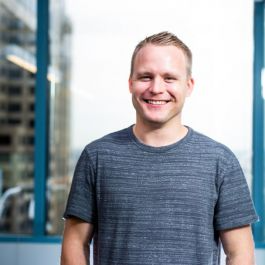
SpotOn is a fintech company offering business owners software and payment solutions to help them run their business. Director of Product Dain Hall said that the company’s decision to build both front- and back-office software for the beauty industry has afforded them the opportunity to apply their scheduling features to other areas.
Which came first for you: the product or the market?
The market. Our company has had tremendous success in selling payment processing services into the beauty market — hair, nail and barbershops — without a compelling software solution. So, a few years ago, my team was tasked with building software to target that market. During that time, the market had gotten more competitive with Square Appointments announcing its POS features, Facebook offering free scheduling features, Squarespace buying Acuity and numerous other startups entering the fray. However, we feel that we have the industry expertise and relationships to compete and win against the competition.
We feel that we have the industry expertise and relationships to compete and win against the competition.”
Tell us about your process for fine-tuning product-market fit. What’s one aspect of that process you find is particularly important?
The backbone of our organization — and our success — is our sales team. They are SpotOn’s product evangelists as well as trusted consultants to our merchants. Whereas most product teams will focus their energy talking to customers, as they rightly should, our product team spends equal amounts of time speaking with our sales team. Combining the two sources of information allows us to create and prioritize a robust pipeline that delivers on our customers’ most immediate needs.
How did your target market shift as your product vision became more clear?
Most people who are unfamiliar with the beauty industry don’t realize that the industry itself is effectively split into two groups: employee-based businesses, and booth rental-based sole proprietorships. And the popularity of each segment is different based upon which region of the country you are in.
These two market segments have drastically different needs from their software. On the employee-based side, they need back-office features like commissions, time-clock management, shift management and robust reporting tools. On the other hand, sole proprietors need tools to promote their brand, communicate one-on-one with their customers and grow their clientele. At first, we didn’t commit to one segment versus the other, instead opting to build software that caters to both segments. Having done so, we’ve found ourselves in a unique position that allows us to apply our scheduling features to other industries and opportunities. We will continue to cater to our original target market, but the opportunities in online scheduling and online payment processing are far greater than just the beauty industry alone.
GreenKey Technologies (GK)
Tejas Shastry
CHIEF DATA SCIENTIST

GreenKey Technologies automates and analyzes real-time human tasks by converting complex, mission-critical audio and text into seamless data structures. Though the technology behind their product came first, Chief Data Scientist Tejas Shastry said the market has always shaped product iteration.
Which came first for you: the product or the market?
A little of both, but generally, the market always came first. Or rather, we always pivoted our product to respond to the market. We have seen this multiple times at GreenKey.
We started out with cutting-edge natural language processing (NLP) technology for voice streams. For example, in finance, we saw firms increasingly relying on chat as a way to communicate and build products around applying our NLP to analyze chat conversations and build interactive chatbots. We spoke with hedge funds and found that they wanted to leverage NLP to help them sift through the mountain of research data they had. Using their feedback, we built our Focus Studio platform to help them build NLP models specifically focused on summarizing research.
In public safety, we were approached by Motorola Solutions with a problem: trying to apply speech recognition and NLP to noisy police audio streams. Again, we built our product off of our technology based on their market feedback.
So for us, the technology came first, but then the market always drove our product direction.
Tell us about your process for fine-tuning product-market fit. What’s one aspect of that process you find is particularly important?
The most important aspect of fine-tuning product-market fit is watching customers solve their most crucial pain point, a key aspect of human-centric design.
It’s a bit cliche, but many have heard the Henry Ford quote where if you ask a customer about the future of transportation, they’ll tell you they want a faster horse. Customers can’t always describe their solution, but they can describe their problem. In order to find a solution for customers and get product-market fit, it’s essential to actually watch them solve their problem however they currently do. Every company’s No. 1 competitor is the status quo — the way a customer currently addresses their pain point. If you can watch that process and innovate on it to make it easier, you’ll get product-market fit.
The challenge, particularly in enterprise software with mission-critical employees, is getting time to observe users in action. It’s challenging sometimes to get their attention, but if you can engage them in a way where they feel like you’re a partner to them in helping them solve their most urgent problems, they will be happy to let you observe.
In order to find a solution for customers and get product-market fit, it’s essential to actually watch them solve their problem.”
How did your original vision for the product evolve or change to better address the needs of the market?
We originally had a vision for our product to help industries like finance and public safety unlock their conversational data to drive automation and efficiency, saving time and in some cases, saving lives. This vision is still accurate, but as we’ve seen our market evolve, our vision has slightly changed for our product.
Simply put, we found that our customers don’t like a black box. Instead of our product being a machine, we’ve changed our vision so that it’s a toolbox. We are helping democratize NLP by enabling our end users to train their own models and automate their own workflows the same way they would train a new employee. It’s an evolution that opens up a lot of opportunities for us. This came from observing users and talking to our customers, understanding that they wanted to extend our technology without any deep technical experience, and building a product around that.
Kin Insurance
Lucas Ward
CO-FOUNDER, PRESIDENT & CTO
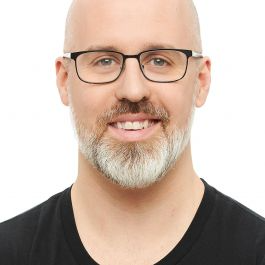
Kin Insurance is a home insurance technology company that covers catastrophe-prone areas. As such, the market has largely driven the company’s product, Co-Founder, President and CTO Lucas Ward said.
Which came first for you: the product or the market?
The market. My Co-Founder Sean Harper and I knew the type of company that we wanted to create and our general strengths and experience. For us, we had two boxes to check: Can it get big? And, can it scale fast? If the idea didn’t meet those criteria, we moved on. This naturally narrowed things down.
For example, it’s harder for a B2B business to scale at the speed we were looking for, so we started looking at B2C opportunities. When we stumbled on the property insurance space, some things really stood out to us. First, it’s a huge market — $100 billion and growing. Second, given the nature of the product, it scales incredibly fast. And finally, 94 percent of the market is sold through brokers (insurance agents). These brokers take about 15 percent of the cost structure. Sean and I both have a lot of experience in automating fintech products, especially underwriting flows. So, when combining all of that, we had a direct-to-consumer property insurance platform with digital distribution.
Tell us about your process for fine-tuning product-market fit. What’s one aspect of that process you find is particularly important?
The most important thing is to not get emotionally attached to ideas. Ideas aren’t a business, and you’re building a business. The market and your customers don’t care about your idea; their problems need to be solved. I think this goes hand in hand with accepting failure. If you’re so attached to your idea that you’re afraid to do things that might fail, you will never grow. You should search for failure and hope to be pleasantly surprised; but, be ready to analyze why it failed and try again.
The most important thing is to not get emotionally attached to ideas. Ideas aren’t a business, and you’re building a business.”
How did your original vision for the product evolve or change to better address the needs of the market?
I don’t think I ever imagined that our first state would be Florida. It seems like the hardest state. But in hindsight, it makes sense. Most new fintech innovation happens in the riskier parts of the market, where larger companies are too inflexible to play. This happened in Florida after Hurricane Andrew. None of the insurance companies you see commercials for while watching football on Sunday provide insurance to Floridians. Not only did we domicile our insurance carrier in Florida, but we also don’t shy away from catastrophe-prone areas. We recently launched our product in California in wildfire-exposed regions.
Kenna Security
Ed Bellis
CO-FOUNDER & CHIEF TECHNOLOGY OFFICER
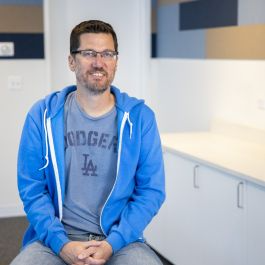
Co-Founder and CTO Ed Bellis said Kenna Security, which provides companies with a risk-based vulnerability management platform backed by data science, was born out of a problem: “too many security vulnerabilities with no clear way to prioritize and fix them,” he said.
Which came first for you: the product or the market?
For us, it always started with the problem at hand. Too many security vulnerabilities with no clear way to prioritize and fix them. We founded the company after directly experiencing the pain for years without a market solution. Prior to founding Kenna Security, I was the chief information security officer at Orbitz. We were expanding rapidly by acquisition, and maintaining infrastructure and applications around the globe.
As part of this, we had vulnerability scanners and assessment tools looking at this infrastructure; static analysis looking at our applications; dynamic application scanning tools; penetration tests and compliance audits. This resulted in more vulnerabilities than we had resources to manage, as well as false positives and duplicates across the tools. After scouring the market and speaking with peers, it became clear there was no product or solution for our pain.
Tell us about your process for fine-tuning product-market fit. What’s one aspect of that process you find is particularly important?
This may be cliche, but for us, it was as simple as working directly with customers and prospects to make sure we were solving the most acute pain point while integrating with their existing tools and processes. We spent a lot of time upfront building out the table stakes of aggregating the data in order to ultimately provide sane and rational prioritization.
I attribute a large part of our product-market fit to the moment when we gave our customers visibility into the information they didn’t previously have.”
How did your original vision for the product evolve or change to better address the needs of the market?
I attribute a large part of our product-market fit to the moment when we gave our customers visibility into the information they didn’t previously have. In other words, aggregation was a “nice to have” pulling in all of the results — normalizing and deduping the data — but this was all data they already had access to. When we began collecting external security telemetry and exploit intelligence, we were able to show our customers what attacks were happening across the internet and how it related to their own environments and vulnerabilities. This became our early “aha” moment.
tastytrade, Inc.
Kristi Ross
CO-CEO & PRESIDENT
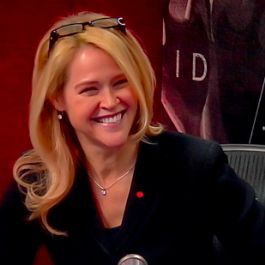
For financial content network tastytrade, which creates original videos designed to be educational, informative and fun, tweaking product-market fit ensures it will be around for the long haul, said Co-CEO and President Kristi Ross. To do so, tastytrade listens to its users — which they also consider themselves to be.
Which came first for you: the product or the market?
The tastytrade ecosystem and each of its companies are led by a seasoned executive team that has experience in everything from professional trading, market-making, retail brokerages and self-directed investing themselves. tastytrade was originally created to fill a void that investors often encountered — they were missing fun and actionable financial media.
Fun and finance were not synonymous terms, and in fact, the combination was an oxymoron. The white space in financial media was clear — the market existed in a rudimentary form. Kramer was probably the first attempt at trying to make investing fun but that didn’t fill the white space. The challenge was creating a product (financial video content) for individuals that would be entertaining, educational and actionable. It was about creating content that empowered the everyday person with tools and information to become confident self-directed investors — and make it fun along the way.
Fine-tuning product-market fit is critical for effective future scalability.”
Tell us about your process for fine-tuning product-market fit. What’s one aspect of that process you find is particularly important?
Fine-tuning product-market fit is critical for effective future scalability. One of the most important aspects of that process starts with accessibility. Leaders within the organization should make themselves accessible and available to customers directly. Listening to customers’ needs and wants, good or bad, is imperative when gathering “intelligence” about your product. The tastytrade executive team still does that today, almost ten years and seven companies later.
Taking feedback from customers via a two-way dialogue, and understanding how that fits into what you built or how that challenges what you built, is important for the development of any product. A bonus for tastytrade is that we are also customers ourselves. We use our own product every day and can relate to the problems our customers may encounter. We’re each one of those customers.
And being in finance, I’d be remiss if I didn’t at least mention numbers. Measurement is also vital: “You can’t change what you don’t measure.” Metrics are part of your product’s report card and can provide a wealth of intelligence and a roadmap to help fine-tune your product.
How did your original vision for the product evolve or change to better address the needs of the market?
Continuous iteration is key to the forward movement and evolution of your product. In the early days of tastytrade, we hired a number of Second City comedians to fill the bench of entertaining professionals that could somehow make finance fun. We knew how to make finance actionable and could talk and teach trading all day long, but needed help layering in the entertainment.
By listening to our customers, we learned that our original content was a little too heavy on the “fun,” so we quickly adjusted, stayed accessible to our customers, and listened to what worked and what didn’t for them. This ultimately led us to find just the right balance of financial edu-tainment that empowers and engages the everyday person in their finances.
LogicGate
Jon Siegler
CHIEF PRODUCT OFFICER
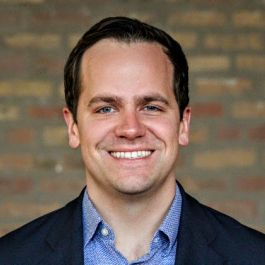
LogicGate’s software is designed to make it easier for companies to build automated risk and compliance programs. Chief Product Officer said the product came as a result of his and his co-founders’ experience in the governance, risk and compliance space.
Which came first for you: the product or the market?
The market came first for us. My co-founders and I were already working in the governance, risk and compliance space before we started LogicGate. We already knew the market really well, and we saw that it was underserved by technology. It really helped to accelerate how quickly we reached product-market fit.
Tell us about your process for fine-tuning product-market fit. What's one aspect of that process you find is particularly important?
The ability to focus is the most important thing in my opinion. The more clearly you can define and articulate the market you serve, the easier it is to build a product that adds value to your customers.
[Knowing the market] really helped to accelerate how quickly we reached product-market fit.”
How did your original vision for the product evolve or change to better address the needs of the market?
At first, we were focused on very niche risk and compliance use cases that were primarily workflow-driven. We then realized with the flexibility of the workflows on our platform, we could solve many problems outside of that market. We went through the Techstars program in 2016 pitching that broader vision, and they quickly brought us back down to earth and taught us the important lesson of “focus.”
Palette Software
Bernt Olausson
COUNTRY MANAGER — NORTH AMERICA
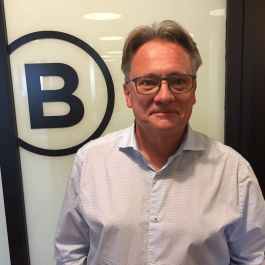
Palette Software provides companies with automation-based accounts payable and purchase-to-pay tools. Since its founding in 1993, it’s evolved from an enterprise resource planning technology to a cloud-based accounts payable automation software.
Which came first for you: the product or the market?
Product. When Palette Software was founded in 1993, the streamlining of invoice processing was a top priority. Since enterprise resource planning (ERPs) performed poorly in the field of supplier invoice management, a proper solution for accounts payable automation was developed and launched in 1998. The first customer for this solution was in the real estate business.
Tell us about your process for fine-tuning product-market fit. What’s one aspect of that process you find is particularly important?
We use processes such as the voice of the customer, which is a way to detect customer needs from customer interview transcripts. We also pay close attention to what our clients are asking for and feed that back to our development team.
We pay close attention to what our clients are asking for and feed that back to our development team.”
How did your original vision for the product evolve or change to better address the needs of the market?
Two decades after inception, the ERP technology has developed into a market-leading AP (accounts payable) automation software that’s offered as a cloud service under the name Palette. The solution is flexible and scalable to suit business needs that shift over time. Today more than 3,500 customers in 40-plus countries are using Palette’s solution for digital invoice processing. Many of these customers have automated more than just accounts payable. It’s common to have a fully automated process from purchase to payment – all supported by Palette’s solution.




